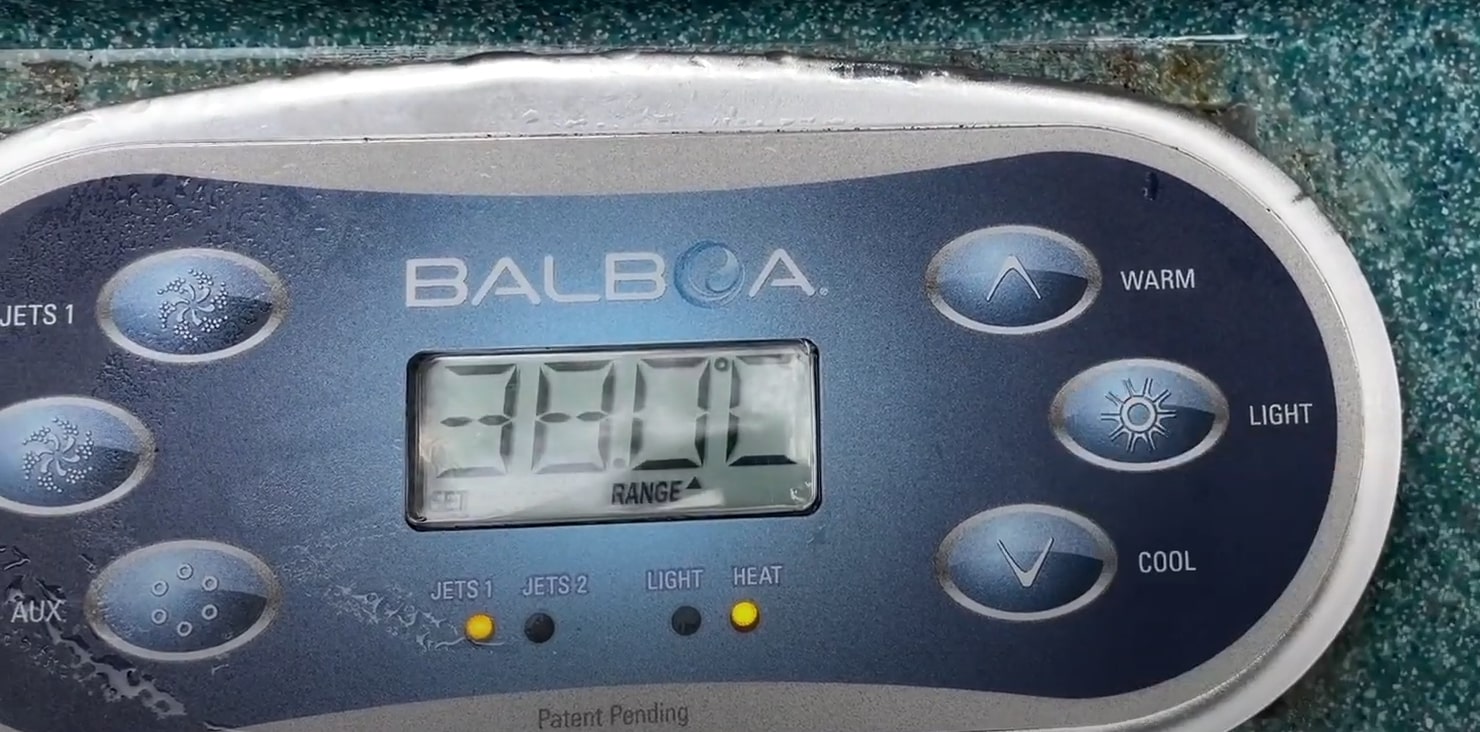
Share Post:
So, you’re gearing up for a hot tub session and wondering what temperature is best. Finding the right setting can make your experience more enjoyable and relaxing. Whether you’re unwinding after a hectic day or having fun with friends, getting the temperature just right is crucial.
Let’s explore the ideal settings to ensure you get the most out of every soak.
Ideal Temperature Range
The best temperature for your hot tub usually falls between 100°F and 104°F (38°C to 40°C). This range provides a comfortable and enjoyable soak without risking overheating.
Here’s why this range works well:
- Comfort Level: Most people find that water in this range is pleasantly warm and relaxing. It helps soothe muscles and ease stress effectively.
- Safety: Staying within 104°F (40°C) ensures you’re not pushing your body’s limits. Water temperatures higher than this can increase the risk of dehydration and overheating.
- Flexibility: The 100°F to 104°F range allows for adjustments based on personal preference and external conditions. For example, if you’re in the hot tub for a longer period, you might want to keep it on the lower end of this range.
Personal Preferences
Finding the right hot tub temperature is all about what feels comfortable for you. Here’s how to figure out what works best:
Starting Point
Most people start with a temperature around 102°F (39°C) and adjust from there. If you’re unsure where to begin, this is a good middle ground.
Adjusting for Comfort
If you find the water too hot or too cool, make small adjustments. Lower the temperature if you’re feeling overheated or increase it if you need more warmth. Your comfort is the key factor here.
Duration of Soak
How long you plan to use the hot tub can affect your ideal temperature. For longer sessions, a cooler setting is usually more comfortable. For shorter, more relaxing soaks, you might prefer it warmer.
Activity Level
What you’re doing in the hot tub can also influence your temperature preference. If you’re just relaxing, a warmer temperature can be soothing. For activities like exercise or therapy, you might prefer a cooler setting.
Experiment and Adjust
Don’t hesitate to try different temperatures to see what you like best. Your perfect temperature might vary based on the day, your mood, or how long you’re in the hot tub. Listen to your body and make adjustments as needed.
Health Factors to Keep in Mind
When you’re setting the temperature for your hot tub, it’s important to think about how it might affect your health. Here’s what to keep in mind:
Personal Health
If you have any health issues, especially with your heart or blood pressure, you should be cautious. It’s a good idea to keep the water cooler, around 100°F (38°C), and check in with your doctor to be sure it’s safe for you.
Listen to Your Body
Your body will give you signals if the temperature isn’t right. If you start feeling dizzy, overheated, or uncomfortable, turn the temperature down. It’s important to pay attention to how you’re feeling and make changes as needed.
Special Cases
Pregnant individuals should also be careful with hot tub temperatures. Keeping the water on the cooler side can help avoid potential risks. Consulting a healthcare professional is always a smart move.
Stay Hydrated
Hot tubs can make you sweat and lose fluids, so drink plenty of water before and after you use it. Avoid staying in too long to help prevent dehydration.
Safe for Everyone
Make sure the temperature is comfortable and safe for everyone, including kids. For children, a lower temperature is usually better. Always keep a close eye on them when they’re in the hot tub.
Soak Duration
How long you stay in the hot tub can impact how you feel. Here’s what to consider:
- Short Soaks: For brief dips, you can usually enjoy a warmer temperature. Just be mindful of how you feel and make adjustments if needed.
- Long Soaks: If you plan to stay in the hot tub for an extended period, it’s better to keep the temperature on the lower end. This helps prevent overheating and keeps you comfortable.
- Take Breaks: Even with a lower temperature, it’s a good idea to take breaks during long sessions. Get out, cool down, and rehydrate to avoid any potential issues.
- Body Signals: Pay attention to your body’s signals. If you start feeling too warm or uncomfortable, it’s time to lower the temperature or take a break.
Seasonal Adjustments
The weather can affect how you enjoy your hot tub. Here’s how to adjust the temperature based on the season:
- Cold Weather: On chilly days, a warmer hot tub can be especially comforting. Set the temperature closer to 104°F (40°C) to enjoy a cozy soak.
- Warm Weather: In hot weather, you might prefer a cooler temperature to avoid feeling overheated. Aim for the lower end of the range, around 100°F (38°C), for a refreshing experience.
- Transition Seasons: During spring and fall, you may need to adjust the temperature more frequently as temperatures fluctuate. Be prepared to tweak the settings to match the changing weather.
- Comfort Adjustment: Always adjust based on how you feel. Even within the same season, your comfort level might vary from day to day.
Safety Tips
Ensuring your hot tub experience is safe involves a few important considerations. Here’s what you need to know:
Temperature Limits
- Stay Below 104°F: To prevent overheating and dehydration, keep the temperature below 104°F (40°C). This is especially important if you’re spending a lot of time in the hot tub.
- Check for Consistency: Make sure the temperature is consistent and stable throughout your soak. Sudden changes in temperature can be uncomfortable and potentially risky.
Supervision
- Keep an Eye on Kids: If children are using the hot tub, make sure the water is set to a safer, lower temperature. Always supervise them closely to ensure their safety.
- Avoid Solo Soaks in Extreme Temperatures: If you’re using the hot tub alone, be extra cautious about the temperature. High temperatures can be more risky if you’re alone and not able to get help quickly.
Hydration
- Drink Water: Hot tubs can lead to dehydration, especially at higher temperatures. Drink plenty of water before and after your soak to stay hydrated.
- Take Regular Breaks: Even if you’re in a cooler hot tub, it’s still a good idea to take breaks. Get out every 15-20 minutes to cool down and hydrate.
FAQs
What’s the best temperature for a hot tub in winter?
In winter, setting your hot tub to a warmer temperature, around 102°F to 104°F (39°C to 40°C), provides a cozy and comfortable soak. The warmth helps counteract the cold weather outside.
Can I use my hot tub if I’m pregnant?
It’s generally advised to keep the hot tub temperature lower if you’re pregnant, around 100°F (38°C). Always consult with your healthcare provider to ensure it’s safe for you.
How often should I clean my hot tub?
You should clean your hot tub every 1-2 weeks. Regular maintenance helps keep the water fresh and prevents buildup of contaminants.
What’s the best way to test hot tub water temperature?
Using a reliable thermometer is the best way to test the water temperature. Digital thermometers provide accurate readings and are easy to use.
How long should I wait to use the hot tub after eating?
It’s a good idea to wait at least 30 minutes after eating before using the hot tub. This allows your body to digest food properly and reduces the risk of discomfort.
Can I adjust the temperature while in the hot tub?
It’s generally safer to adjust the temperature before getting into the hot tub. If you need to make changes while in it, do so carefully and allow time for the water to stabilize.
Conclusion
Finding the perfect hot tub temperature can greatly enhance your relaxation and enjoyment. By setting your hot tub between 100°F and 104°F (38°C to 40°C), you can strike a comfortable balance. Pay attention to personal preferences, health considerations, and how long you plan to soak to find what works best for you.
Seasonal changes can also affect your ideal temperature, so don’t hesitate to adjust as needed. Always keep safety in mind by monitoring hydration, supervising children, and ensuring the temperature stays within a safe range.
Related Posts:
- How to Plan the Perfect Surprise Spa Weekend for…
- How Heavy Is a Hot Tub and Is It Safe to Move Alone?
- Hot Tub vs Sauna: Which One is Right for You?
- Electric vs Natural Gas Hot Tub - Which is Better?
- How Much Does a Hot Tub Weigh and Can You Move It By…
- Electric vs. Natural Gas Hot Tubs - Which Offers…















